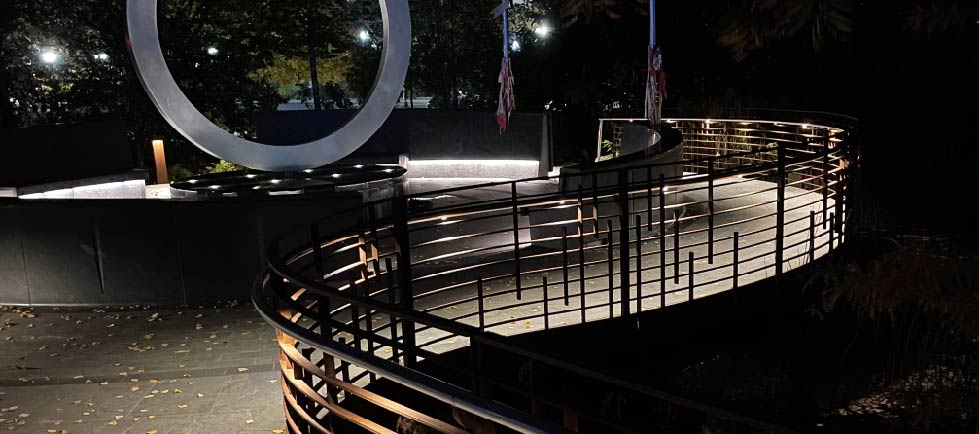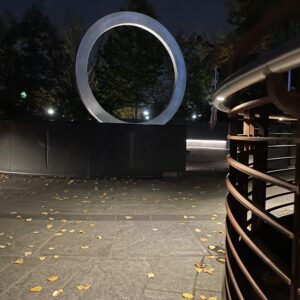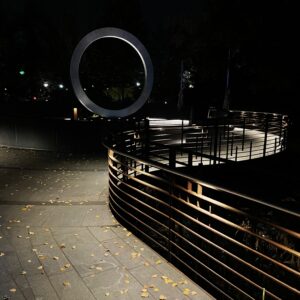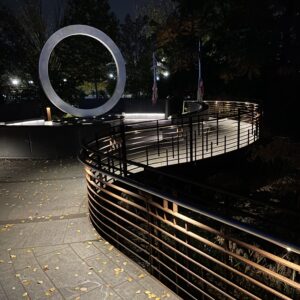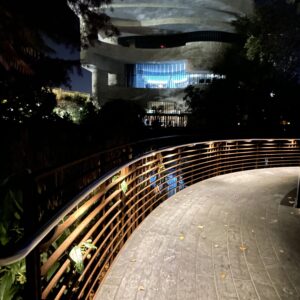KLIK USA has been fortunate to have many jobs in Washington D.C. but a particularly special project is our latest lighting solution. Besides the National Museum of the American Indian sits the National Native American Veterans Memorial, which opened on November 11, 2020. Alongside the symbolism and beauty of the memorial comes a rich history of Native American service for the country and a story of nationalism despite all odds.
The National Native American Veterans Memorial honors the Native Americans who have served the United States since the origin of the country in its symbolic representation. The memorial was designed by Harvey Pratt of the Cheyenne and Arapaho Tribes of Oklahoma. Out of the 120 submissions, Harvey, a Vietnam War veteran, won with his circular-designed memorial. When entering the memorial, you walk the Path of Harmony which shows throughout differences in culture, recognition of similarity proves necessary. The memorial features a circular bench with four openings, representing the four cardinal directions, and further, four spears that prayer ties are meant to be tied to. Prayer ties are offerings of prayer, intentions, and messages, often tobacco covered in cloth, that are left for loved ones. They should not be removed or touched as they are in a sacred place. In the center of the memorial is a drum, surrounded by a constant flow of water and a stainless steel ring that sits in the center of it, which can be lit with fire for occasions. The water makes an echoing sound on the drum, reminiscent of a pounding of the drum to call people to the circle.
Tracking throughout history shows the large numbers by which Native Americans have volunteered to serve in the U.S. Military. It proves important to note that throughout many U.S. wars, the Native Americans who served were not considered United States citizens, a right not granted until 1924 in the Indian Citizenship Act. Their service was in service to the United States but tied closely to their love for their land. As history continued, there was a high turnout of Native Americans volunteers in WWII and Vietnam as, according to USO, “of the 42,000 Native Americans who served in the Vietnam War, 90% of them were volunteers” (USO, 2021). During these wars, Native American involvement proved vital as their culture and history carried the United States in many tactical ways. In Vietnam, the Navajo Code Talkers were crucial for high-sensitivity operations as their use of the Navajo language, a language that has not been written down throughout time, which demonstrated a distinct advantage of their service. Alongside the members of the Cherokee, Choctaw, Lakota, Meskwaki, and Comanche tribes, the Navajo codes were never broken, in both WWII by the Japanese and in Vietnam.
USO states, “Since September 11, almost 19% of all Native Americans have served in the Armed Forces – in comparison to an average of 14% of all other ethnicities”. More than anything, Native Americans’ main motivation in serving is a love for the homeland and a duty they feel to give back to the land that has given to them and their ancestors.
Sources:
https://americanindian.si.edu/visit/washington/nnavm

